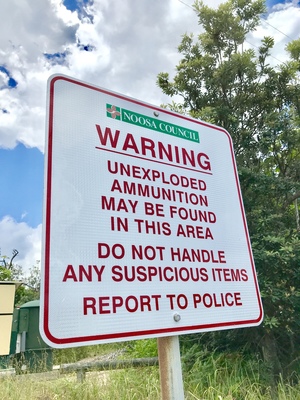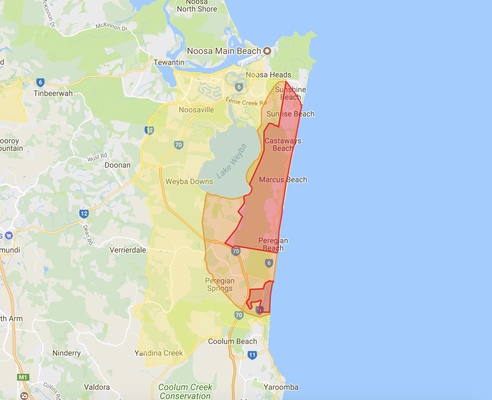By Margaret Maccoll
Grenades, mortars and anti-tank ammunition have been discovered in Noosa, left-over from military activity in World War II, and air-to-ground rockets and bombs were used in the area.
As ANZAC Day approaches Noosa Today contacted the Australian Defence Force to discover what military activity occurred on the coast from Coolum to Noosa Heads to rate the area as an unexploded ordinance (UXO) hot spot.
The ADF has compiled a map that shows where UXOs have been found. The area from Coolum to Noosa Heads is marked in red indicating a substantial occurrence of UXO.
An ADF spokesperson said South-East Queensland was a major staging and training location for Commonwealth and Allied Forces during WWII and the region around Noosa to Coolum Beach was used by a number of Commonwealth formations and units for encampment and training purposes during this time.
“The Australian 7th Division had brigades based at Caboolture, Kilcoy and Woombye in 1943. To support this level of activity a large artillery range was established north of Caloundra, which was used between 1939 and 1944 for artillery, infantry and armour live firing and demonstrations,” the spokesperson said.
“Another artillery range, the Noosa-Peregian Artillery Range, was established in late 1942 south of Noosa to Mt Peregian (Emu Mountain). The area was used by Australian Commonwealth Forces for military field firing and encampment purposes until 1959.”
“Many types of ammunition were used during military training on these ranges. The types of UXO discovered in this area cover a broad range of that ammunition, including grenades, mortars, and anti-tank and artillery ammunition. There is evidence some areas were also used for air-to-ground practices including rocket, gunnery and bombing.”
It wasn’t until an increase in developments in the late 1980s that ADF identified the areas and levels of UXO contamination. Working with council and the Environmental Protection Agency ADF supplied safety information to the public and UXO remediation was undertaken to enable development. It was generally conducted by commercial UXO companies with ADF support, the ADF spokesperson said.
ADF continues to advise on the management of the area.
Defence advises anyone suspecting they have found a UXO should contact police who would request ADF assistance to either remove it, dispose of it or demolish it on site.
ADF says there are no known instances in Australia where an incidentally discovered item of UXO has injured a member of the public.
However UXO can be dangerous if disturbed or handled.
If found do not touch, note its appearance and location. If possible take its photograph, inform the property owner and police.
To view ADF’s UXO map visit 52.65.9.125 and for more information visit www.defence.gov.au/uxo/.








